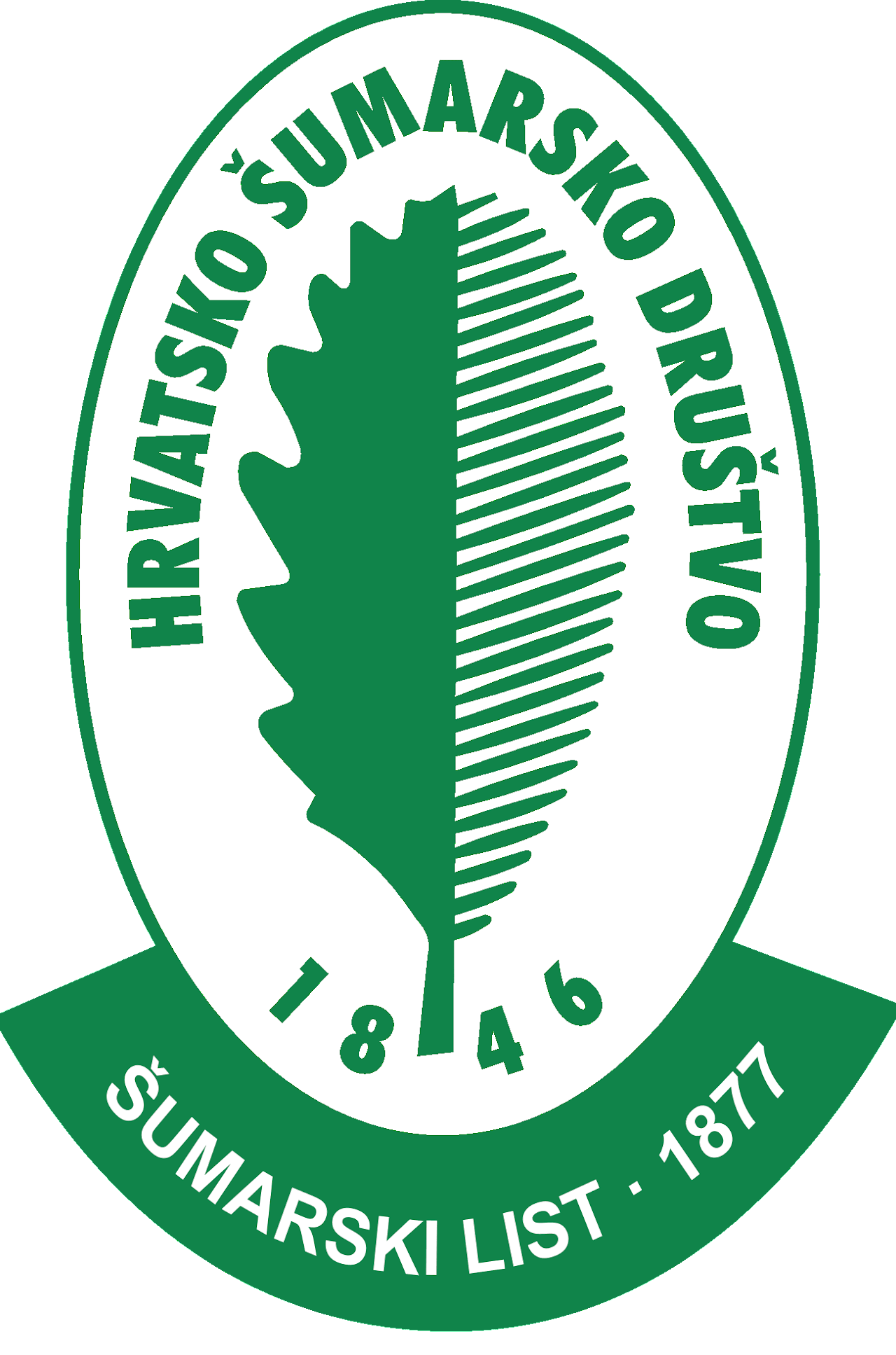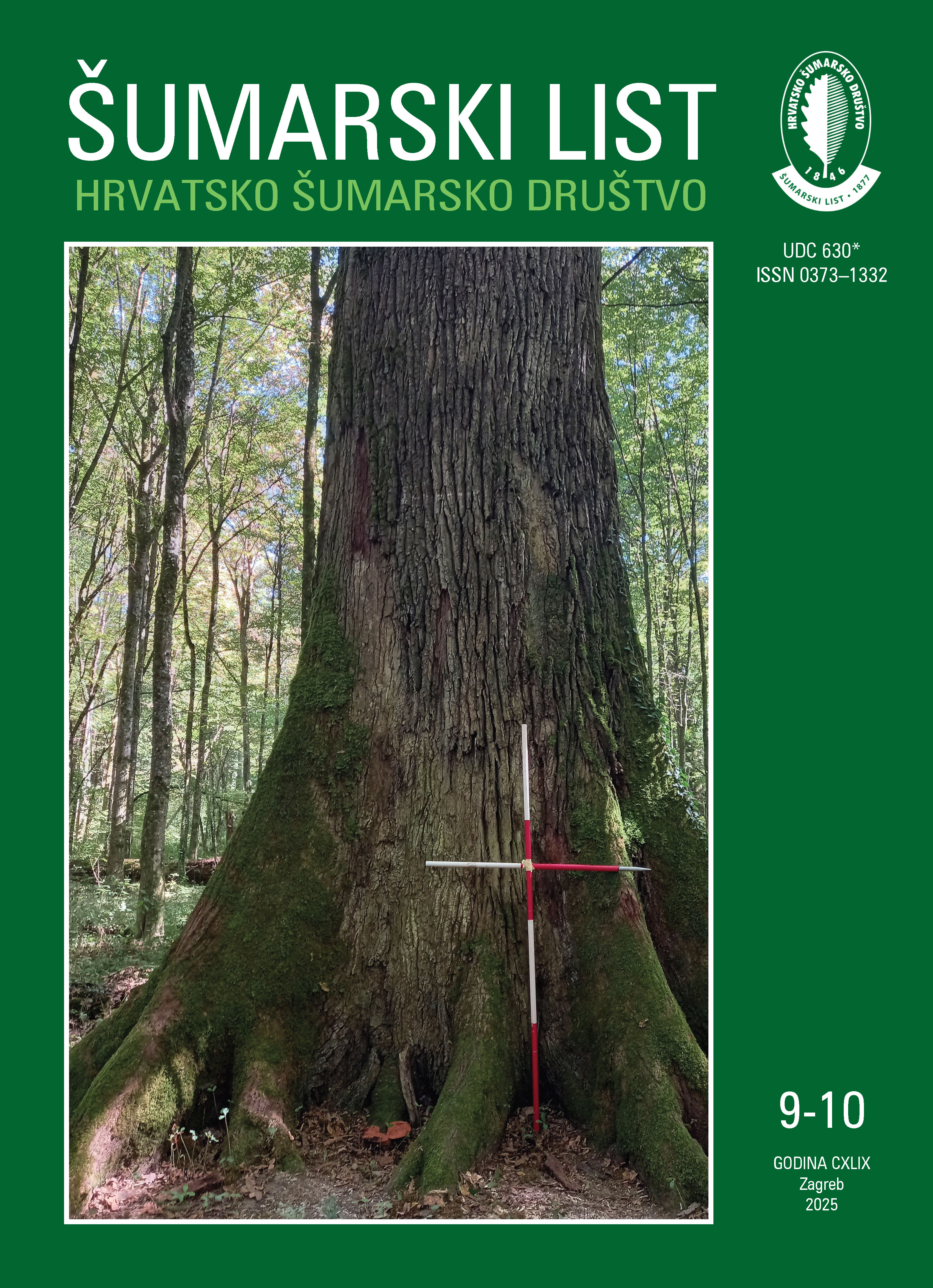Genetska raznolikost i genotipizacija klonova u klonskoj sjemenskoj plantaži crnog bora (Pinus nigra J.F.Arnold)
Ključne riječi:
crni bor, morfometrijska analiza, genetska analiza, mikrosateliti, klonska sjemenska plantažaSažetak
Cilj ovog istraživanja bio je utvrditi raznolikost klonova unutar klonske sjemenske plantaže crnog bora (Pinus nigra J.F.Arnold, Pinaceae) na području Šumarije Krk pomoću morfoloških i molekularnih biljega te provesti genetsku identifikaciju (genotipizaciju) rameta kako bi se provjerila točnost nacrta plantaže. U istraživanje su uključeni uzorci 136 rameta iz pet populacija. Molekularne analize provedene su primjenom mikrosatelitskih DNA-biljega, dok je morfometrijska analiza obuhvatila 10 svojstava iglica i češera. Analiza je pokazala statistički značajne razlike među klonovima i populacijama prema svim istraživanim morfološkim svojstvima. Prosječna dužina iglica iznosila je 89,8 mm, dok su češeri, prosječne dužine 55,7 mm i širine 26,8 mm, sadržavali 106 sjemenih ljusaka. U klonskoj sjemenskoj plantaži utvrđeno je 27,2 % pogrešno označenih jedinki (rameta), od kojih su tri pripadale drugim klonovima, dok su ostale imale nepoznate genotipe. Glavni uzroci pogrešaka uključuju odumiranje plemki i rast stabalaca iz podloge, dok su greške u označavanju također moguće. Nacrt plantaže potrebno je ispraviti kako bi se pogrešno označene ramete pravilno označile, a jedinke nepoznatog porijekla i genotipa trebalo bi ukloniti. Buduće plemke za nadopunjavanje plantaže, u slučaju njenog daljnjeg održavanja, trebaju se uzimati sa sada potvrđenih rameta. Kod primjeraka s niskom rašljom koji su za dvije grane imali različite genotipove od kojih samo jedan pripada klonu po nacrtu treba odstraniti granu s krivim genotipom jer je potjerala iz podloge. U usporedbi s drugim istraživanjima s mikrosatelitskim biljezima na crnom boru, genetska raznolikost u plantaži (HE = 0,646) pokazala je vrijednosti slične prirodnim populacijama. Klonovi u plantaži porijeklom su iz malog broja populacija od kojih su neke vrlo slabo zastupljene pa se u slučaju održanja plantaže preporuča proširiti genetsku bazu novoselekcioniranim klonovima. Multivarijatnim statističkim metodama nije utvrđeno grupiranje klonova temeljem njihove pripadnosti izvornim populacijama. Dobiveni rezultati ovog istraživanja imaju značajnu praktičnu vrijednost za šumarsku struku jer sjemenske plantaže čine prikladnu bazu za ex situ očuvanje genetske raznolikosti vrste te za proizvodnju genetski kvalitetnog sjemena za obnovu sastojina ili potpomaganje prirodne obnove. Ovo istraživanje također ukazuje na važnost točnog označavanja klonova kako bi se izbjegle negativne posljedice u gospodarenju klonskim sjemenskim plantažama.
Preuzimanja
Objavljeno
Broj časopisa
Rubrika
Kategorije
Licenca
Autorska prava (c) 2025 Ida Katičić Bogdan, Rudolf Stipetić, Antonio Vidaković, Marko Bačurin, Saša Bogdan, Zlatko Šatović, Igor Poljak

This work is licensed under a KreativniCommons Attribution-NonCommercial Međunarodne licence.


